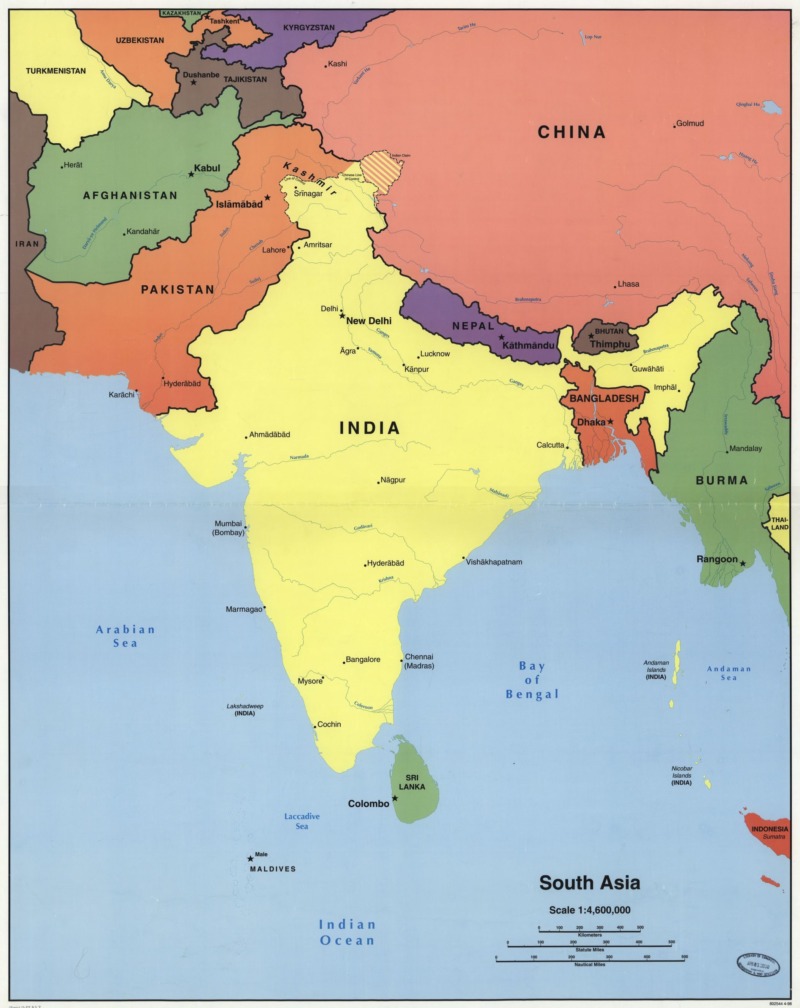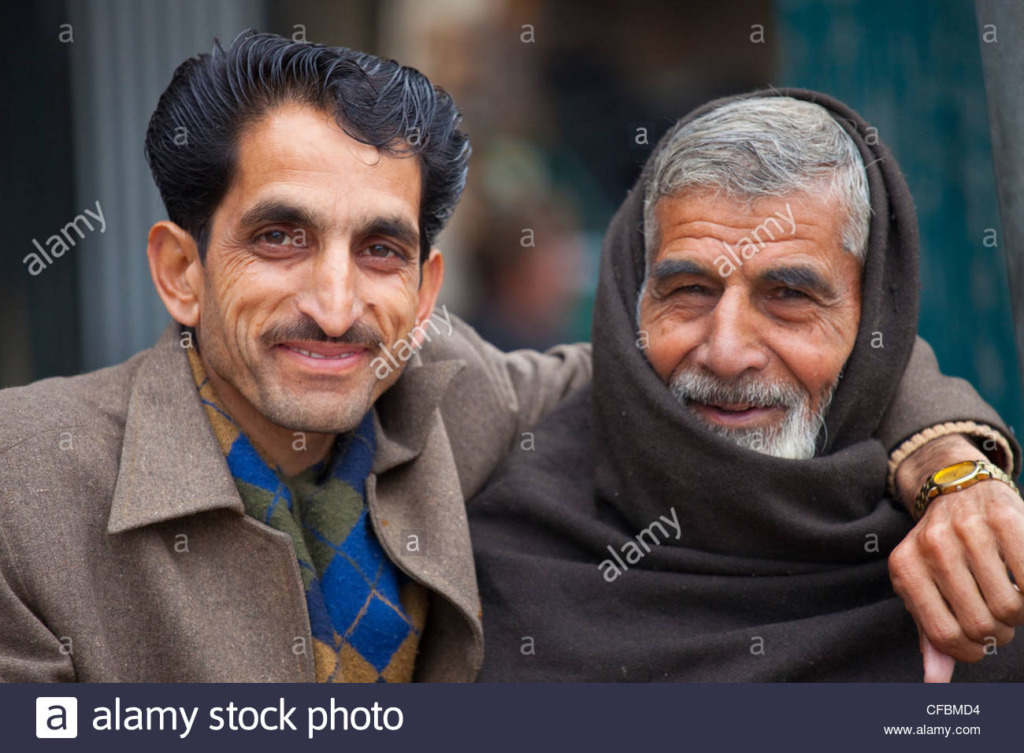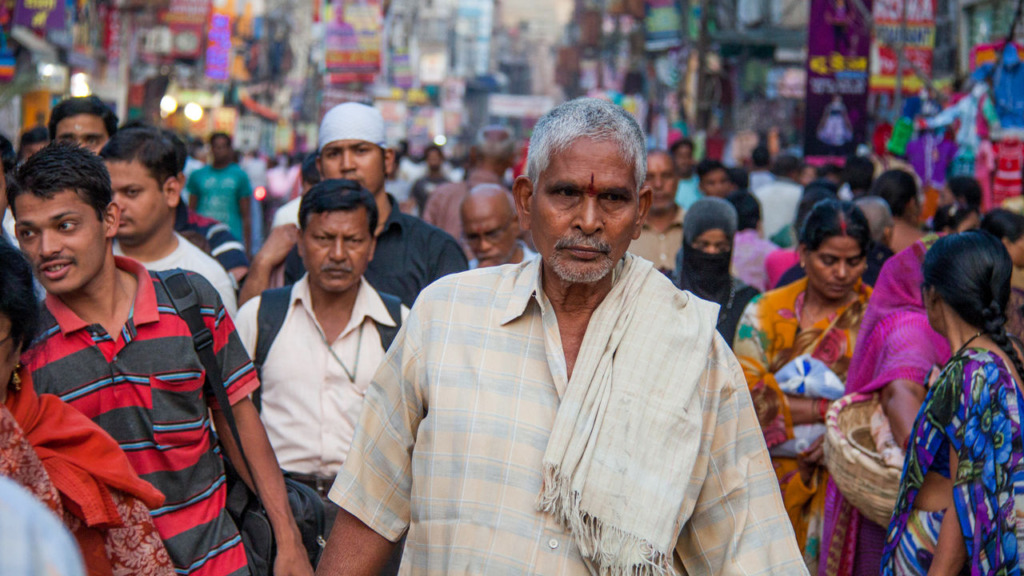Genetic Diversity of South Asia
South Asia is a culturally, linguistically and genetically complex region of the world, and one of the first regions to be reach by anatomically modern humans after leaving Africa some 70,000 years ago.
For purposes of analysis, we consider South Asia to consist of Afghanistan, Pakistan, India, Bangladesh, Nepal and Bhutan (see map below).

A Map of South Asia
Image Source: Library of Congress Geography and Map Division
Lorem ipsum dolor sit amet, consectetur adipiscing elit, sed do eiusmod tempor incididunt ut labore et dolore magna aliqua. Ut enim ad minim veniam, quis nostrud exercitation ullamco laboris nisi ut aliquip ex ea commodo consequat. Duis aute irure dolor in reprehenderit in voluptate velit esse cillum dolore eu fugiat nulla pariatur. Excepteur sint occaecat cupidatat non proident, sunt in culpa qui officia deserunt mollit anim id est laborum. Lorem ipsum dolor sit amet, consectetur adipiscing elit, sed do eiusmod tempor incididunt ut labore et dolore magna aliqua. Ut enim ad minim veniam, quis nostrud exercitation ullamco laboris nisi ut aliquip ex ea commodo consequat. Duis aute irure dolor in reprehenderit in voluptate velit esse cillum dolore eu fugiat nulla pariatur. Excepteur sint occaecat cupidatat non proident, sunt in culpa qui officia deserunt mollit anim id est laborum.

Lorem ipsum dolor sit amet, consectetur adipiscing elit, sed do eiusmod tempor incididunt ut labore et dolore magna aliqua.

Lorem ipsum dolor sit amet, consectetur adipiscing elit, sed do eiusmod tempor incididunt ut labore et dolore magna aliqua.

Nepal
Lorem ipsum dolor sit amet, consectetur adipiscing elit, sed do eiusmod tempor incididunt ut labore et dolore magna aliqua.
Publications
Arunkumar G, Soria-Hernanz DF, Kavitha VJ, Arun VS, Syama A, Ashokan KS, Gandhirajan KT, Vijayakumar K, Narayanan M, Jayalakshmi M, Ziegle JS, Royuru AK, Parida L, Wells RS, Renfrew C, Schurr TG, Smith CT, Platt DS, Pitchappan R, The Genographic Consortium. 2012. Population differentiation of southern Indian male lineages correlates with agricultural expansions predating the caste system. PLoS ONE 7(11): e50269.
Haber M, Platt DE, Bonab MA, Youhanna SC, Soria-Hernanz DF, Martínez-Cruz B, Douayhi B, Ghassibe-Sabbagh M, Rafatpanah H, Ghanbari M, Balanovsky O, Wells RS, Comas D, Tyler-Smith C, Zalloua PA, The Genographic Consortium. 2012. Afghanistan’s ethnic groups share a Y-chromosomal heritage structured by historical events. PLoS ONE 7(3): e34288.
ArunKumar GP, Hai L Kavitha VJ, Syama A, Arun VS, Sahoo S, Patel S, Sathwa SK, Balakrishnan R, Riba T, Chakravarthy J, Chaudhury B, Panda P, Das PK, Nyak PK, Li H, Pitchappan R, The Genographic Consortium. 2015. A late Neolithic expansion of Y chromosomal haplogroup O2a1-M95 from east to west. J Syst Evol Article first published online: 31 Mar 2015 doi:10.1111/jse.12147.
ArunKumar G, Tatarinova TV, Duty J, Rollo D, Syama A, Arun VS, Kavitha VJ, Triska P, Greenspan B, Wells RS, Pitchappan R, The Genographic Consortium. 2015. Genome-wide signatures of male-mediated migration shaping the Indian gene pool. J Hum Genet 60(9): 493-499.
Syama A, Arun VS, Arunkumar G, Subhadheepta R, Kai F, Pitchappan RM, The Genographic Consortium. 2019. Origin and identity of the Brokpa of Dah-Hanu, Himalayas – An NRY-HG L1a2 (M357) legacy. Ann Hum Biol 46(7-8): 562-573.
Zubair M, Habib A, Hemphill BE, Schurr TG, Tariq M. 2020. Mitochondrial genetic diversity of the Khattak and Kheshgi tribes of Peshawar Valley, Pakistan. Genetica 148: 195-206
Tariq M, Habib A, Hemphill BE, Farooq U, Schurr TG. 2022. Contrasting maternal and paternal genetic histories of five major ethnic groups of Khyber Pakhtunkhwa, Pakistan. Nature Scientific Reports 12: 1027.
Laboratory of Molecular Anthropology
University of Pennsylvania
421 University Museum
3260 South Street
Philadelphia, PA 19104-6398, USA
Tel: 215-573-2656

FOLOW US:
